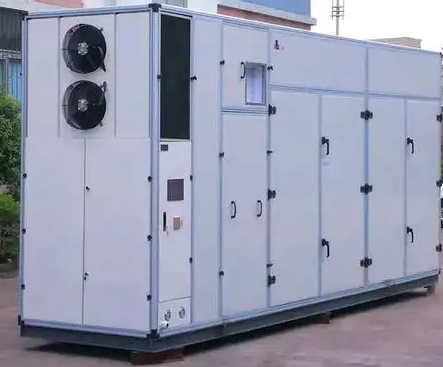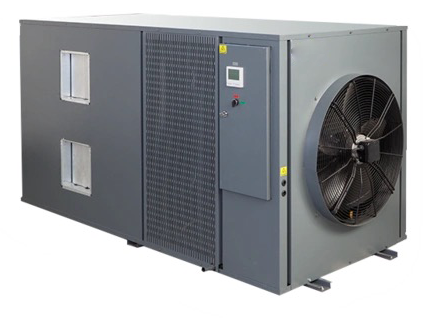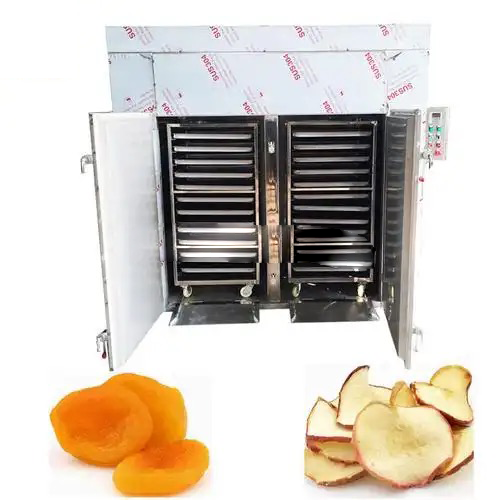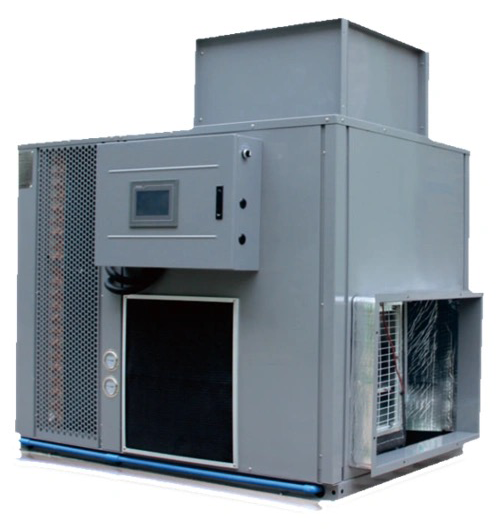
Content Menu
● Understanding Heat Pump Dryers
● Benefits of Using Heat Pump Dryers for Food
● Key Features to Consider When Buying a Heat Pump Dryer
>> Capacity
>> Temperature Control
>> Humidity Control
>> Energy Consumption
>> Ease of Use
>> Durability and Build Quality
>> Maintenance Requirements
>> Safety Features
>> Brand Reputation and Support
>> Price and Warranty
● How to Use a Heat Pump Dryer for Food Drying
● Common Applications of Heat Pump Dryers in Food Processing
● Advantages of Heat Pump Dryers Over Traditional Dryers
● Conclusion
● Frequently Asked Questions
>> 1. What is the difference between a heat pump dryer and a conventional dryer?
>> 2. Can I dry all types of food in a heat pump dryer?
>> 3. How long does it take to dry food in a heat pump dryer?
>> 4. Is maintenance required for heat pump dryers?
>> 5. Are heat pump dryers environmentally friendly?
When it comes to food preservation, drying is one of the oldest and most effective methods. In recent years, heat pump dryers have gained popularity in the food processing industry due to their energy efficiency and ability to maintain the quality of dried products. As a manufacturer of food dryers in China, we provide OEM services to international brands, wholesalers, and producers. This article will guide you through the essential factors to consider when purchasing a heat pump dryer, particularly for food drying applications.

Understanding Heat Pump Dryers
Heat pump dryers operate on a simple principle: they use a refrigeration cycle to remove moisture from food products. Unlike traditional dryers that expel hot air, heat pump dryers recycle the air within the system, making them more energy-efficient. This technology allows for lower drying temperatures, which helps preserve the nutritional value, flavor, and color of the food.
Benefits of Using Heat Pump Dryers for Food
1. Energy Efficiency: Heat pump dryers consume significantly less energy compared to conventional dryers. This is particularly beneficial for businesses looking to reduce operational costs.
2. Quality Preservation: The lower drying temperatures help retain the essential nutrients and flavors of the food, making heat pump dryers ideal for fruits, vegetables, and herbs.
3. Versatility: These dryers can handle a variety of food products, from fruits and vegetables to meats and fish, making them suitable for diverse applications.
4. Environmentally Friendly: By using less energy and reducing waste, heat pump dryers are a more sustainable option for food processing.
5. Compact Design: Many heat pump dryers are designed to be space-efficient, making them suitable for small production facilities or kitchens.
Key Features to Consider When Buying a Heat Pump Dryer
When selecting a heat pump dryer for food drying, several key features should be taken into account:
Capacity
The capacity of the dryer is crucial, especially for commercial applications. Consider the volume of food you plan to dry regularly. Heat pump dryers come in various sizes, so choose one that meets your production needs without compromising efficiency.
Temperature Control
Look for a dryer with precise temperature control settings. The ability to adjust the temperature is essential for different types of food. For instance, delicate herbs may require lower temperatures, while fruits and vegetables can handle slightly higher settings.
Humidity Control
Effective humidity control is vital for achieving optimal drying results. A good heat pump dryer should have sensors that monitor humidity levels and adjust the drying process accordingly. This feature ensures that food is dried evenly and thoroughly.
Energy Consumption
Check the energy efficiency rating of the dryer. A higher rating indicates lower energy consumption, which translates to cost savings over time. Look for models that are designed to minimize energy use while maximizing performance.

Ease of Use
Consider the user interface and controls of the dryer. A model with a straightforward control panel and clear instructions will make it easier for operators to use the machine effectively. Features like programmable settings can enhance convenience.
Durability and Build Quality
Since food dryers are often used in demanding environments, durability is essential. Look for models made from high-quality materials that can withstand regular use. Stainless steel construction is often preferred for its resistance to corrosion and ease of cleaning.
Maintenance Requirements
Choose a dryer that is easy to maintain. Regular cleaning and maintenance are crucial for ensuring the longevity of the machine. Look for features like removable filters and easy access to internal components for cleaning.
Safety Features
Safety should always be a priority. Ensure that the dryer has built-in safety features such as overheat protection, automatic shut-off, and child safety locks. These features help prevent accidents and ensure safe operation.
Brand Reputation and Support
Research the brand's reputation in the market. Established brands often provide better customer support, warranties, and service options. Look for reviews and testimonials from other users to gauge the reliability of the product.
Price and Warranty
Finally, consider your budget. While it may be tempting to choose the cheapest option, investing in a high-quality heat pump dryer can save you money in the long run. Additionally, check the warranty offered by the manufacturer. A longer warranty period often indicates confidence in the product's durability.
How to Use a Heat Pump Dryer for Food Drying
Using a heat pump dryer for food drying is relatively straightforward. Here’s a step-by-step guide:
1. Preparation: Wash and cut the food into uniform pieces to ensure even drying. For fruits, consider blanching to preserve color and texture.
2. Loading the Dryer: Place the prepared food in the dryer trays, ensuring there is enough space for air circulation. Avoid overcrowding the trays.
3. Setting the Temperature and Time: Adjust the temperature and drying time based on the type of food. Refer to the manufacturer's guidelines for recommended settings.
4. Monitoring the Process: Keep an eye on the drying process. Many heat pump dryers come with built-in timers and alerts to notify you when the drying cycle is complete.
5. Cooling and Storing: Once the drying process is complete, allow the food to cool before packaging. Store the dried food in airtight containers to maintain freshness.
Common Applications of Heat Pump Dryers in Food Processing
Heat pump dryers are versatile and can be used for various food products, including:
1. Fruits: Apples, bananas, and berries can be dried to create healthy snacks.
2. Vegetables: Carrots, tomatoes, and peppers can be dehydrated for soups and stews.
3. Herbs: Basil, oregano, and thyme can be dried for culinary use.
4. Meats: Jerky production is made easier with heat pump dryers, allowing for controlled drying.
5. Fish: Fish can be dried for preservation and flavor enhancement.
Advantages of Heat Pump Dryers Over Traditional Dryers
Heat pump dryers offer several advantages over traditional drying methods, making them a preferred choice for many food processing businesses:
1. Lower Operating Costs: Due to their energy efficiency, heat pump dryers can significantly reduce electricity bills, especially for businesses that rely heavily on drying processes.
2. Improved Product Quality: The ability to control temperature and humidity allows for better preservation of the food's natural flavors, colors, and nutrients, resulting in a higher quality end product.
3. Reduced Environmental Impact: By consuming less energy and producing less waste, heat pump dryers contribute to a more sustainable food processing operation.
4. Flexibility in Operation: Heat pump dryers can be used in various settings, from small kitchens to large-scale food processing plants, making them adaptable to different business needs.
5. Enhanced Safety Features: Many modern heat pump dryers come equipped with advanced safety features that protect both the operator and the product, ensuring a safe working environment.
Conclusion
Investing in a heat pump dryer for food processing can significantly enhance your production capabilities while ensuring high-quality dried products. By considering factors such as capacity, temperature control, energy consumption, and brand reputation, you can make an informed decision that meets your business needs.

Frequently Asked Questions
1. What is the difference between a heat pump dryer and a conventional dryer?
Heat pump dryers recycle air and operate at lower temperatures, making them more energy-efficient and better for preserving food quality.
2. Can I dry all types of food in a heat pump dryer?
Yes, heat pump dryers are versatile and can handle a wide range of food products, including fruits, vegetables, meats, and herbs.
3. How long does it take to dry food in a heat pump dryer?
Drying times vary depending on the type of food and its moisture content, but generally, it takes longer than conventional dryers due to lower temperatures.
4. Is maintenance required for heat pump dryers?
Yes, regular maintenance is essential for optimal performance. This includes cleaning filters and checking for any blockages.
5. Are heat pump dryers environmentally friendly?
Yes, they are more energy-efficient than traditional dryers, which helps reduce energy consumption and greenhouse gas emissions.












